
Welcome to the world of Caribbean architecture, where rich cultures and varied histories converge to create a beautiful architectural landscape. This essay beckons you to explore the nuances of Caribbean architecture, unraveling its historical evolution, prevailing styles, climate-responsive design, sustainable practices, regional variations, modern trends, and the distinct features of retaining and interior walls.
In this exploration, we will probe the unique blend of indigenous, African, European, and other influences that form the foundation of Caribbean architecture.
1. Historical Evolution

Indigenous Influences on Early Architecture
The roots of Caribbean architecture delve deep into the indigenous cultures that inhabited the islands before European colonization. The Taíno, Arawak, and Carib peoples had their distinct architectural styles, utilizing local materials to construct homes perfectly attuned to the tropical climate.

Colonial Impact on Architectural Styles
The arrival of European colonizers, including the Spanish, French, and British, left an enduring imprint on Caribbean architecture. Spanish Colonial, French Creole, and British Colonial styles emerged, each adapting to the local environment while infusing European aesthetics.
Post-independence Developments and Modern Influences
In the post-independence era, Caribbean architecture experienced a resurgence, embracing both traditional and modern elements. The influence of global architectural trends, combined with a renewed appreciation for indigenous styles, resulted in a dynamic and evolving architectural landscape.
2. Architectural Styles
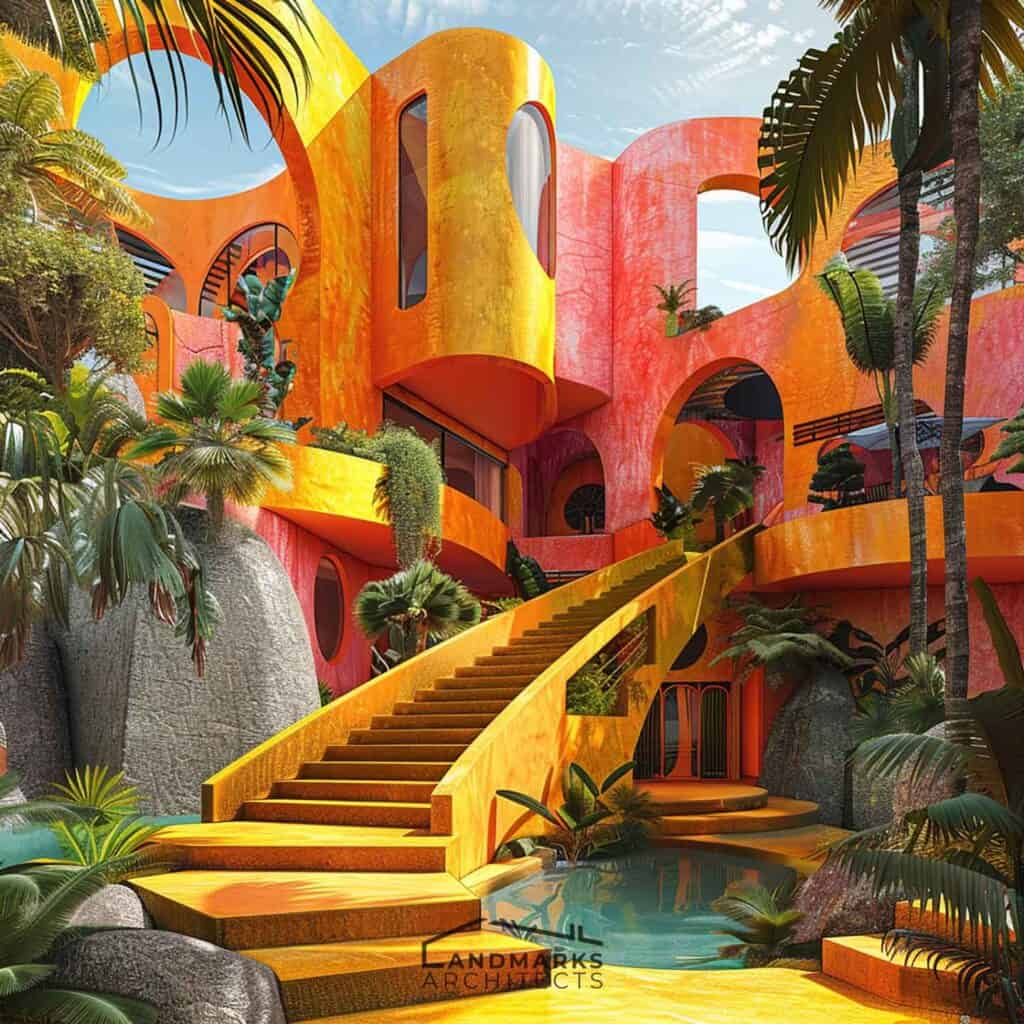
Caribbean architectural design is a mosaic of styles, with Spanish Colonial, French Creole, and British Colonial being the most prominent. These design styles exemplify a harmonious fusion of European sophistication with the practicality demanded by the tropical climate.
Caribbean architecture is a testament to the region’s cultural diversity, with each style incorporating elements from various sources. Indigenous building techniques, African influences in decorative arts, and European design principles coalesce to create a unique architectural identity.
3. Climate-Responsive Design
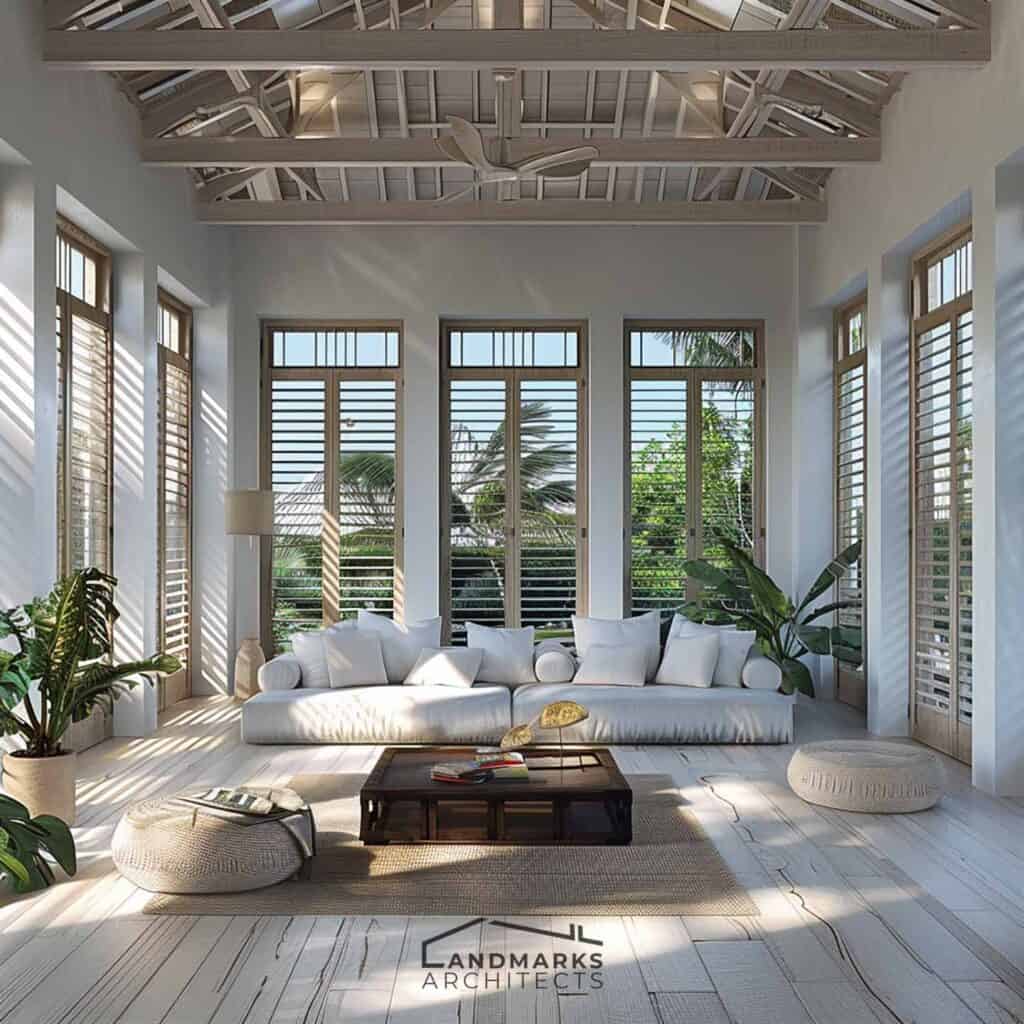
Caribbean architecture prioritizes climate responsiveness, acknowledging the necessity of adapting to the region’s hot and humid conditions. Constructing buildings that counter the effects of intense sunlight, heavy rainfall, and hurricanes is indispensable, ensuring both immediate comfort and long-term durability of structures in this dynamic environment.
Architects carefully integrate features that not only provide shelter but also create environments that are resilient and sustainable in the face of the Caribbean climate’s challenges.
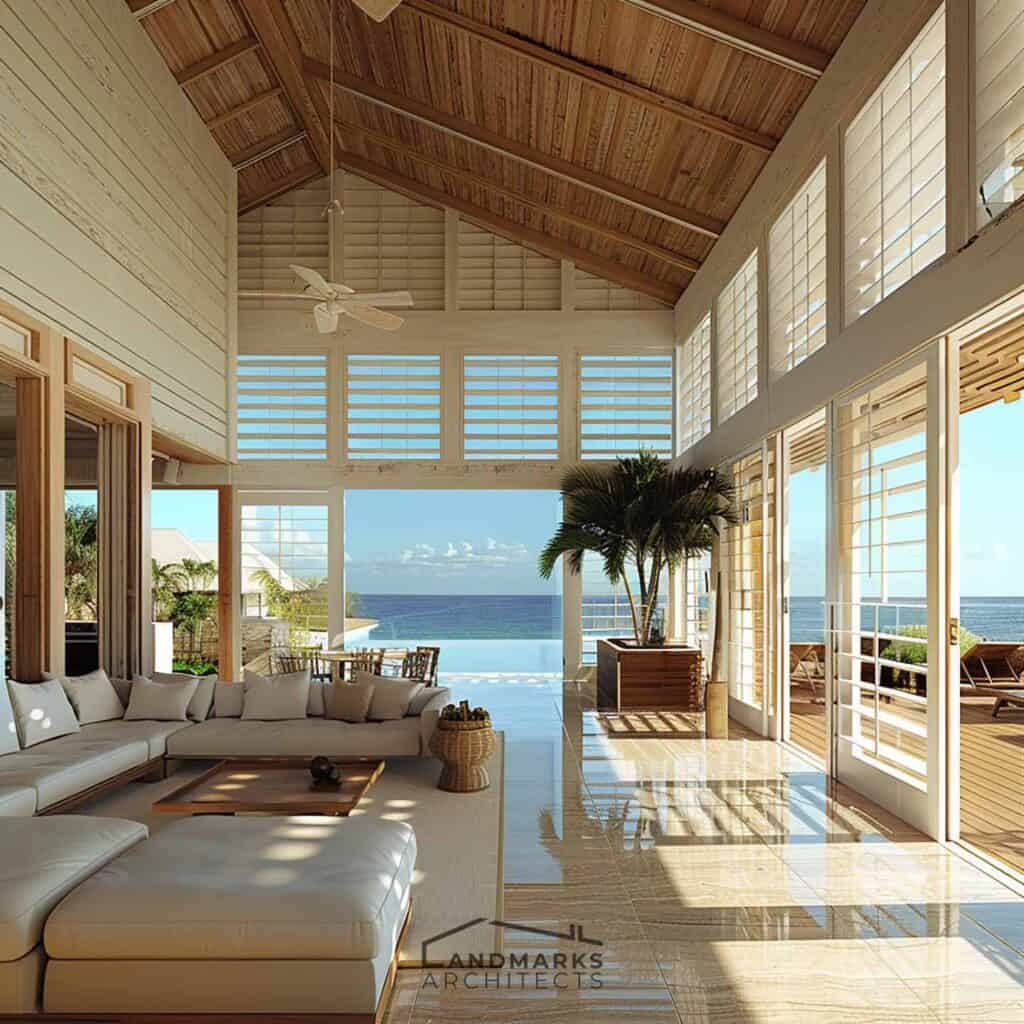
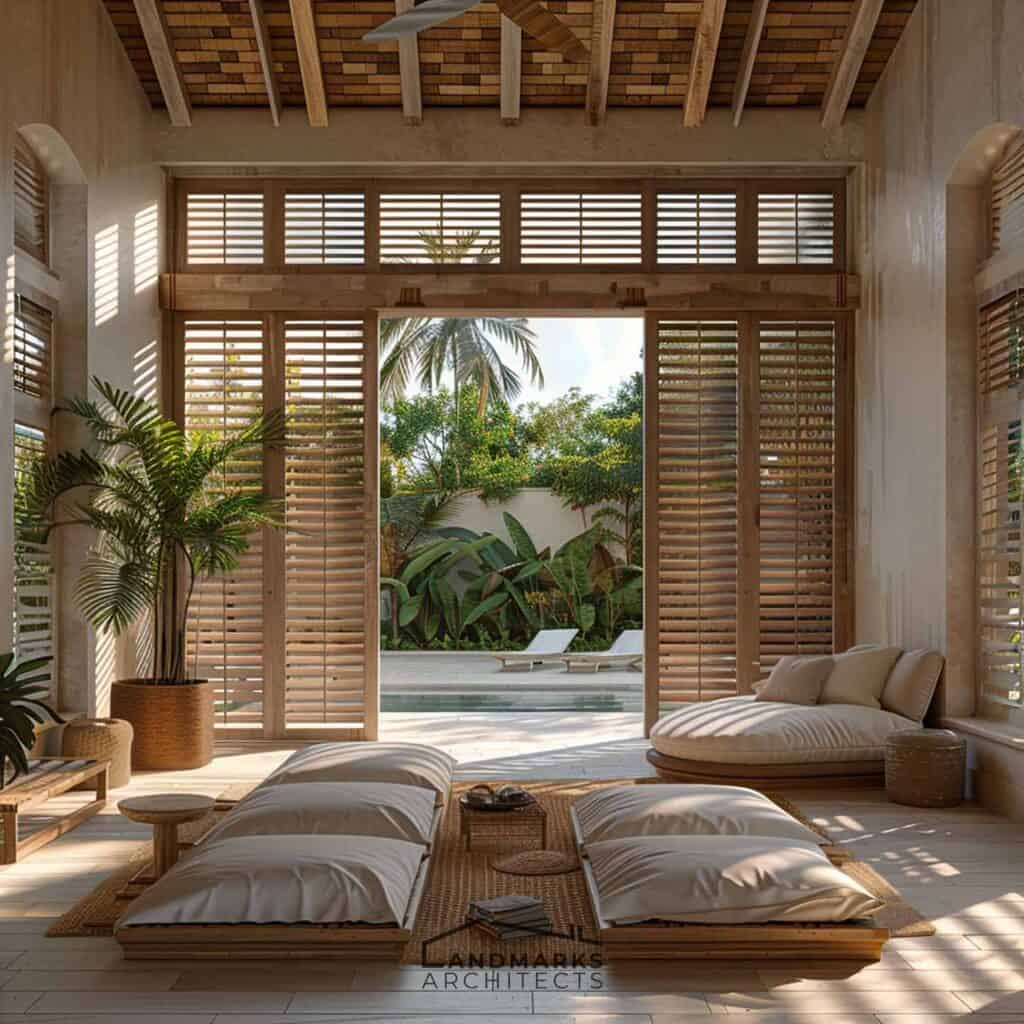
Architects in the Caribbean integrate features such as high ceilings, louvered windows, and open-air verandas to enhance natural ventilation and cooling. These elements not only optimize comfort but also minimize reliance on energy-intensive cooling systems.
The seamless integration of outdoor spaces is a hallmark of Caribbean architecture. Courtyards, patios, and expansive verandas serve as extensions of living spaces, blurring the lines between indoors and outdoors while promoting cross-ventilation and a connection with nature.
4. Sustainable Practices
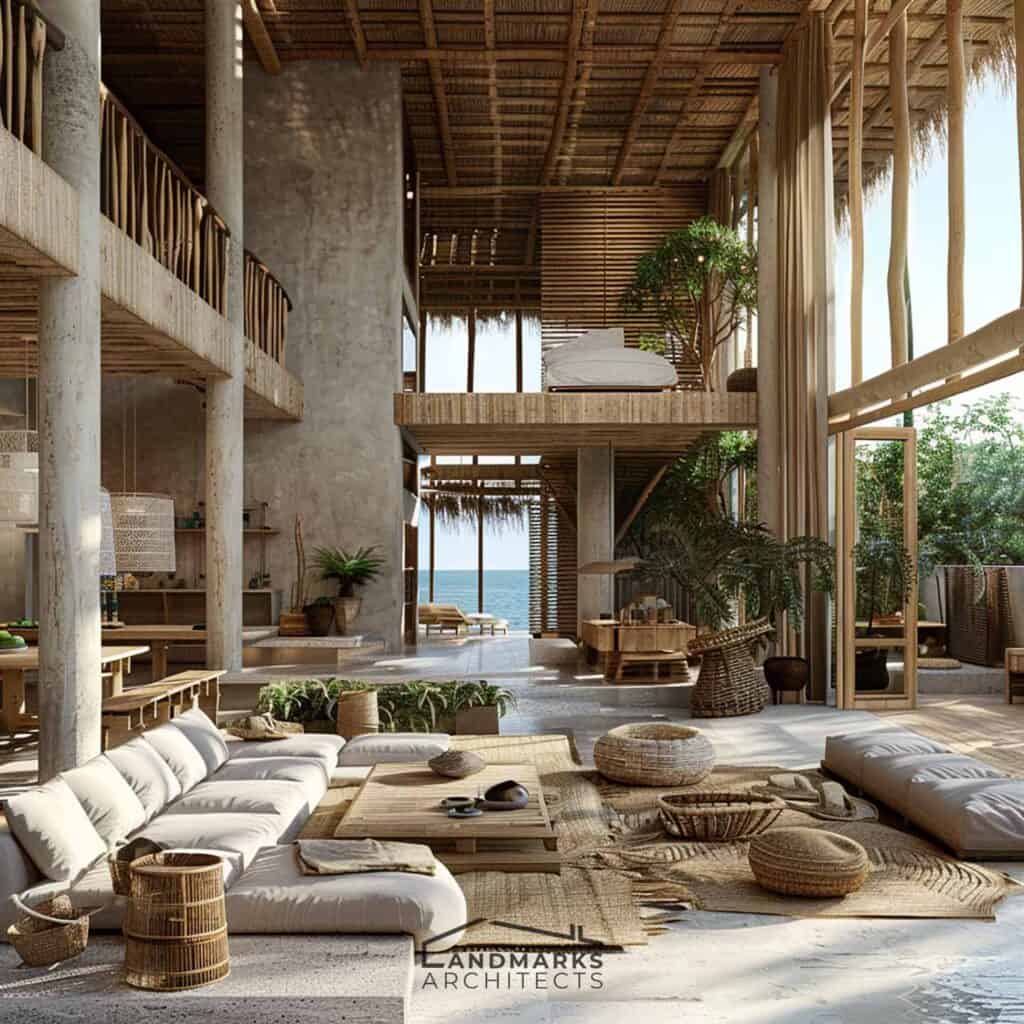

Caribbean architects champion sustainability by utilizing locally sourced and natural materials, such as bamboo, timber, and coral stone. This not only reduces the environmental impact but also fosters a connection between the built environment and the natural landscape.
Traditional Caribbean building techniques, handed down through generations, emphasize durability and resource efficiency. Techniques such as timber frame construction and lime mortar application contribute to the longevity and sustainability of structures.
In the contemporary era, architects in the Caribbean are embracing modern innovations to further enhance sustainability. From energy-efficient building materials to green roofs, these innovations align with global efforts to create environmentally conscious structures that respect the delicate ecosystems of the Caribbean islands.
5. Regional Variations

While overarching styles exist, each Caribbean island exhibits unique variations influenced by local cultures, geography, and historical experiences. From the colorful houses of Curacao to the plantation-style homes in Barbados, regional differences contribute to Caribbean architecture.
Some regions or countries within the Caribbean have distinctive architectural features that set them apart. For instance, the Spanish influence is prominent in Puerto Rico, while the Dutch architecture in Aruba reflects the island’s colonial history.
Geography, climate, and historical legacies are pivotal factors influencing regional variations in Caribbean architecture. The availability of local materials, trade relationships, and the mix of cultures have all contributed to the varied architectural expressions observed across the Caribbean.
6. Waterfront Architecture

In the dynamic mosaic of Caribbean culture, the influence of the coastal setting on architectural styles stands as a testament to the deep connection between the people of the Caribbean islands and their natural environment.
The architectural design along the waterfront is a harmonious blend of functionality and aesthetics, seamlessly integrating cultural elements that resonate with the local identity.
The proximity to the sea has instilled a unique sense of fluidity in Caribbean waterfront architecture, where open spaces, breezy layouts, and lively colors coalesce to create structures that not only withstand the challenges of the coastal climate but also embody the essence of Caribbean life.
7. Artistic Expressions in Architecture
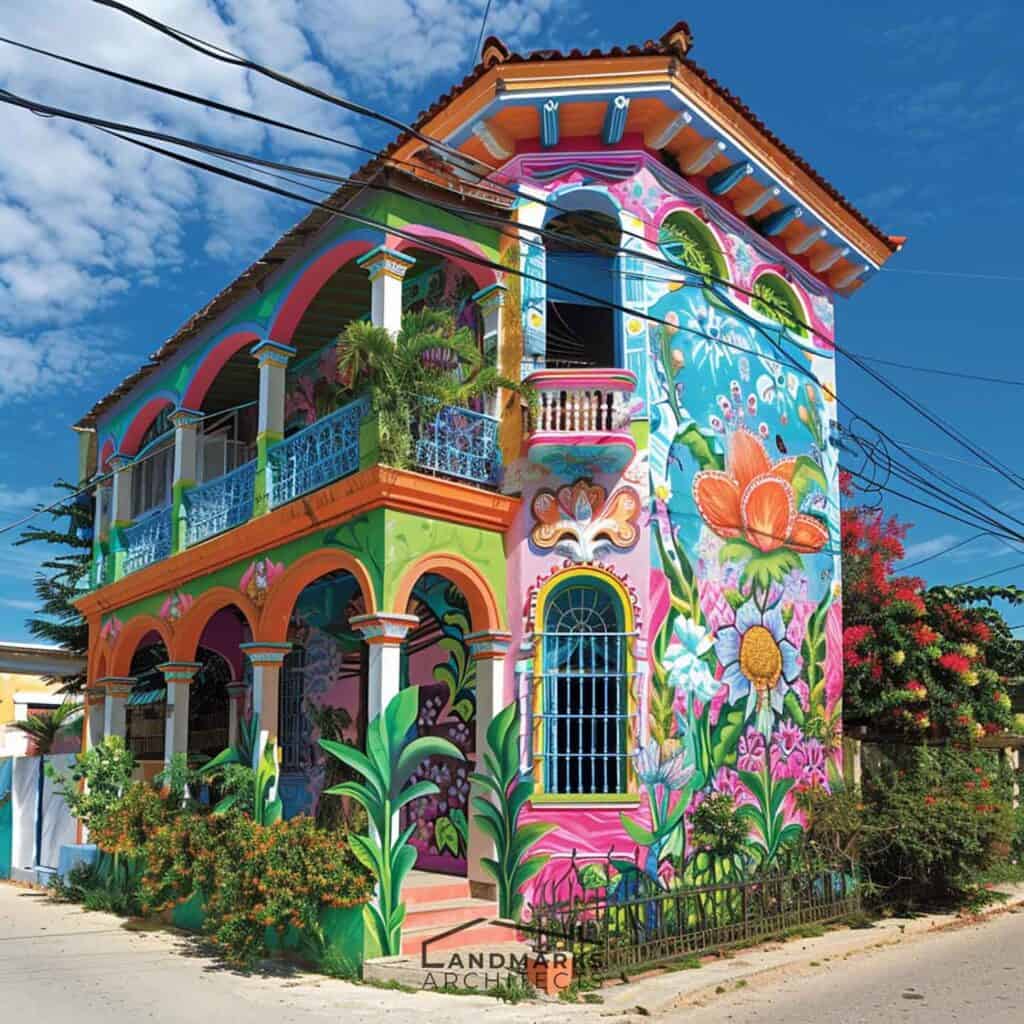
In Caribbean architecture, the role of art and aesthetics takes center stage, weaving a narrative that reflects the rich cultural heritage of the region.
Beyond the structural elements, artistic expressions in Caribbean architecture often find manifestation through lively murals and the influence of talented muralists. These muralist influences serve as a visual storytelling medium, illustrating the history, traditions, and social dynamics of the respective islands. The incorporation of murals into architectural spaces becomes a distinctive feature, offering a dynamic and engaging dimension to the built environment.
8. Modern Trends
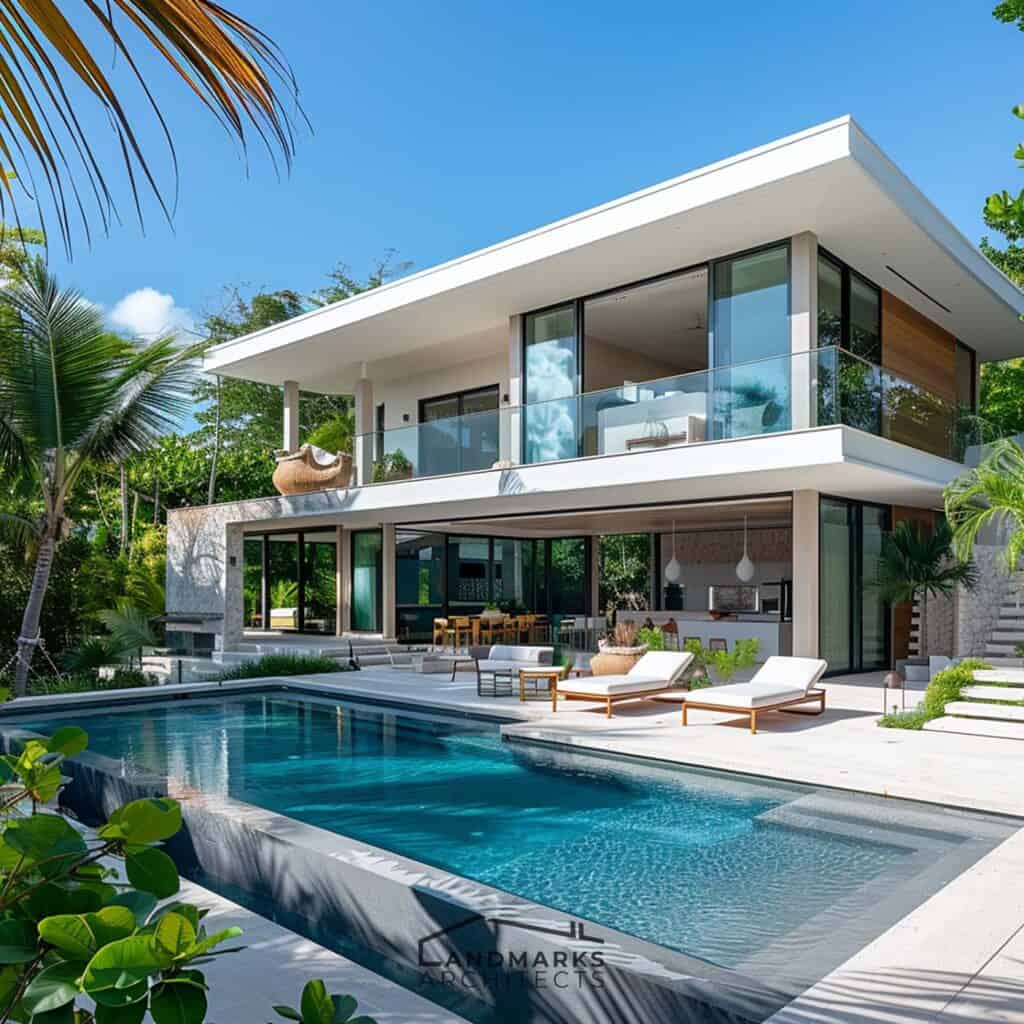
Modern Caribbean architecture is a fusion of the traditional and the contemporary. Architects are incorporating sleek lines, minimalist designs, and innovative materials while preserving the essence of Caribbean identity and climate-responsive principles.
The blending of traditional and modern elements is evident in contemporary Caribbean designs. Architects skillfully incorporate cutting-edge technologies and materials while maintaining the cultural authenticity that defines Caribbean architecture.
Sustainability remains a focal point in modern architecture. The use of solar panels, rainwater harvesting systems, and eco-friendly construction methods underscores a commitment to creating structures that respect both the cultural heritage and the natural environment.
Caribbean Architecture: A recap

In conclusion, Caribbean architecture is more than bricks and mortar; it is a living testament to the resilience and adaptability of the Caribbean people. The significance of this architectural heritage lies not only in its aesthetic appeal but in its ability to tell the stories of a region shaped by varied cultures, struggles, and triumphs.
While navigating a swiftly evolving world, recognizing and preserving the distinctive cultural heritage embedded in Caribbean architecture takes on heightened importance. By cherishing and safeguarding these architectural gems, we actively contribute to the perpetual legacy of a region distinguished by the fusion of its own architectural styles, blending tradition and innovation to craft a lasting architectural identity.









